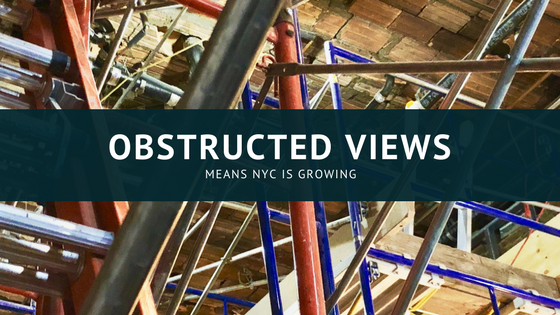It is no secret the New York City is a hub for breathtaking architecture and giant skyscrapers. Yet, the locals and tourists are distracted by the sidewalk sheds, making it difficult to look up and enjoy the beauty of the city. These sidewalk sheds cover over 270 miles of sidewalks spanning five boroughs. This can be tracked by New York’s Department of Buildings that released an interactive map that displays every single sidewalk shed in real time.
Sidewalk sheds are different than scaffolding. These sidewalk sheds are normally paired with scaffolding and are actually “required by law to protect the public from potential hazards when a building has a facade defects, is undergoing facade maintenance projects or where there is ongoing construction,” according to a press release from the DOB.
This map shows in-depth data including where exactly there are located throughout NYC and the average number of days each individual shed collectively have been standing. The sidewalk shed map project’s purpose is to aid New Yorkers to become more aware of construction work throughout the city and to also to be more aware of property owners who obstruct sidewalks. Upon first glance of over 8,000 active sheds, much of the east side of Manhattan seems covered with sidewalk sheds. The application for the building permit can show what business is responsible for the shed. Everest Scaffolding Inc. to AE Design Solutions Inc. are the two top owners with the most sidewalk sheds.
“We are excited to deliver another data-driven tool to help New Yorkers learn more about our city’s built environment and to help DOB improve our service to the public,” Buildings Commissioner Rick Chandler said in a statement.
This can also be seen as a greater call for local citizens to become aware and engaged with the city’s urban planning. Naturally, New York is a fast-paced, ever-changing city and construction is necessary for that change and growth. But, if sidewalk sheds are becoming a daily annoyance, find ways to avert them with this helpful map, provided directly from the Department of Buildings. Even though they may be a nuisance, they are necessary.

